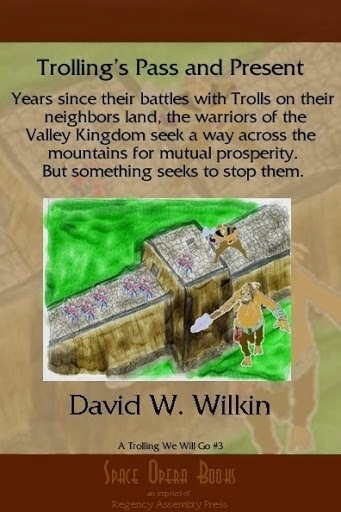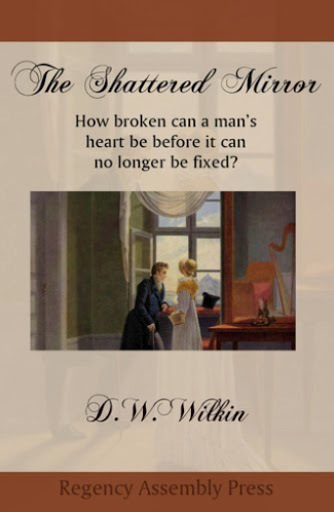D.W. Wilkin's Blog, page 170
November 15, 2014
Regency Personalities Series-Emily Lamb Lady Cowper (Patroness of Almacks)
Regency Personalities Series
In my attempts to provide us with the details of the Regency, today I continue with one of the many period notables.
Emily Lamb Lady Cowper (Patroness of Almacks)
1787–1869
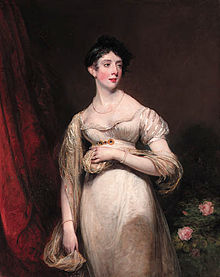
Emily Lamb
Emily Lamb Lady Cowper (Patroness of Almacks) Emily was born in 1787 to Peniston Lamb and his wife Elizabeth (née Milbanke). Due to her mother’s numerous love affairs, her true paternity was never verified, and has been described as ” shrouded in mystery”. The Lamb family had been politically prominent since the mid-18th century, reaching their zenith of influence in Emily’s generation. Her father was made Viscount Melbourne in 1781. Her eldest brother William Lamb twice held the premiership of England, while another brother, Frederick Lamb, was a noted diplomat, and a third, George Lamb, was a minor playwright and journalist of the era. The Lambs were closely linked with the Whig party, and were intimates of Queen Victoria. There was a lifelong bond between William and Emily, whom he fondly called “that little devil”; by contrast she detested his wife, Lady Caroline Lamb (whom she called “that little beast”).
At age eighteen, Emily married Peter Clavering-Cowper, 5th Earl Cowper, a man nine years her senior. Lord Cowper had a reputation for dullness and slowness of speech which were in marked contrast to his wife’s social gifts; a more favourable portrait was that he was a quiet, pleasant man who was far less stupid than he appeared but avoided society and politics. Emily threw herself into the Regency social scene, becoming one of the leading ladies of the highly exclusive Almack’s club. She was noted for kindness and generosity: she would do anything for a person she liked, and would even help people she disliked: although she detested her sister-in-law Caroline, when Caroline was barred from Almack’s, a deep social disgrace, Emily eventually managed to get the ban lifted. Like many of the society ladies of the age, she had love affairs, including one with the Corsican diplomat Carlo Andrea Pozzo di Borgo, later Russian Ambassador to Great Britain.
Emily was noted not only for beauty but for her extraordinary charm: she was “grace put in action, whose softness was as seductive as her joyousness”.
At Almack’s, Lady Cowper was increasingly seen in the company of Henry John Temple, 3rd Viscount Palmerston, who was known as “Cupid” at the time for his various romantic dalliances, including affairs with Emily’s fellow patronesses of Almack’s, Dorothea Lieven and Sarah Villiers, Countess of Jersey. Palmerston was a regular fixture of her parties and salons, and as Lord Cowper sank into a long period of ill health and general decline, Lady Cowper and Lord Palmerston entered into a romantic relationship. This brought Palmerston, originally a Tory, increasingly in contact with notable Whigs, particularly Emily’s brother. Of an 1826 proposal for Catholic Emancipation, Palmerston said, “the Whigs supported me most handsomely, and were indeed my chief and most active friends.” Soon after, Palmerston switched affiliations and ran as a Whig candidate. Emily’s mother on her deathbed in, urged her to remain constant to Palmerston, possibly looking forward to a future time when they would be free to marry.
In 1837, Lord Cowper died, two days into the reign of Queen Victoria. This left the way open for a marriage between Emily and Palmerston, though their age was a cause for concern, as, in the eyes of her family, was Palmerston’s reputation as a womaniser. The matter was referred to Queen Victoria, whose approval cleared the way for the marriage on 16 December 1839. Palmerston was 55 at the time, and Lady Cowper was 52.
They set up their home at Broadlands and the union was, by all accounts, a decidedly happy one. Of it, Lord Shaftesbury said, “His attentions to Lady Palmerston, when they both of them were well stricken in years, were those of a perpetual courtship. The sentiment was reciprocal; and I have frequently seen them go out on a morning to plant some trees, almost believing that they would live to eat the fruit, or sit together under the shade.”
During the marriage, Lady Palmerston continued an active social role as a salon hostess. As the events were eagerly attended by foreign diplomats, Lord Palmerston would encourage his wife to float his ideas before the assembled guests and report back on their reception as a means of unofficially testing the diplomatic waters before committing himself publicly to an opinion. She could not cure his notorious lack of punctuality, a fault she shared; Queen Victoria, staying with them at Brocket, complained that Emily had kept her waiting for an hour.
In 1865, Lord Palmerston died, and Lady Palmerston followed him four years later. She was survived by her three sons and two daughters, all born during her marriage to Lord Cowper, although one of the daughters, Emily, was believed to have been fathered by Palmerston, and her son William may have been fathered by Pozzo di Borgo. They were:
George Cowper, 6th Earl Cowper
William Cowper-Temple, 1st Baron Mount Temple
Charles
Frances Jocelyn, Viscountess Jocelyn
Emily, who married Anthony Ashley-Cooper, 7th Earl of Shaftesbury.


November 14, 2014
Regency Personalities Series-George Spencer-Churchill 5th Duke of Marlborough
Regency Personalities Series
In my attempts to provide us with the details of the Regency, today I continue with one of the many period notables.
George Spencer-Churchill 5th Duke of Marlborough
6 March 1766 – 5 March 1840
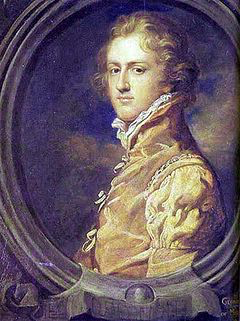
George Spencer-Churchill
George Spencer-Churchill 5th Duke of Marlborough was the eldest son of George Spencer, 4th Duke of Marlborough, and Lady Caroline Russell, daughter of John Russell, 4th Duke of Bedford. Francis Spencer, 1st Baron Churchill, was his younger brother. He was educated at Eton between 1776 and 1783 and at Christ Church, Oxford between 1784 and 1786, where he graduated on 9 December 1786 as a Bachelor of Arts, later proceeding automatically to Master of Arts. He was later given the honorary degree of Doctor of Laws (D.C.L.) from the University on 20 June 1792.
Lord Blandford represented Oxfordshire in parliament as a Whig between 1790 and 1796 and Tregony as a Tory between 1802 and 1806. From 1804 to 1806 he served under William Pitt the Younger as a Lord of the Treasury. The latter year he was summoned to the House of Lords through a writ of acceleration in his father’s barony of Spencer of Wormleighton. During this time, he lived in Berkshire, at Remenham and Hurst. From 1798, he resided at Whiteknights Park at Earley, near Reading, where he became famous for his extravagant collecting of antiquities, especially books. He was invested as a Fellow of the Society of Antiquaries (FSA) on 8 December 1803.
Although the Marquess was born and baptised with the name of George Spencer, soon after succeeding to the Dukedom of Marlborough, he had it legally changed on 26 May 1817 to George Spencer-Churchill. This illustrious name did not, however, save him from his mounting debts and his estates were seized and his collections sold. He retired to Blenheim Palace where he lived the remainder of his life off a small annuity granted to the first Duke by Queen Anne.
The diarist Harriet Arbuthnot wrote one of her most scathing comments about the Duke following a visit to Blenheim in 1824:
The family of the great General is, however, gone sadly to decay, and are but a disgrace to the illustrious name of Churchill, which they have chosen this moment to resume. The present Duke is overloaded with debt, is very little better than a common swindler and lets everything about Blenheim. People may shoot and fish at so much per hour and it has required all the authority of a Court of Chancery to prevent his cutting down all the trees in the park.
Marlborough married Lady Susan Stewart, daughter of John Stewart, 7th Earl of Galloway, on 15 September 1791. They had four children:
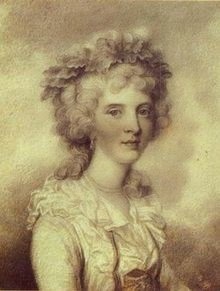
Lady Susan Stewart, Duchess of Marlborough
George Spencer-Churchill, 6th Duke of Marlborough (1793–1857)
Lord Charles Spencer-Churchill (1794–1840), married Ethelred Catherine Benett and had issue.
Reverend Lord George Henry Spencer-Churchill (1796–1828), married Elizabeth Martha Nares.
Lord Henry John Spencer-Churchill (1797–1840).
Illegitimate children:
John Tustian (1799–1873).
Illegitimate children by Matilda Glover (1802–1876)
Georgina Matilda (1819–1898)
Caroline Augusta (1821–1905)
Elizabeth (Ellen) (1823–1878)
Henry Spencer (1831–1831)
George
Henry
The Duke died in March 1840, aged 73, at Blenheim Palace and was buried there in the vault beneath the chapel on 13 March 1840. His eldest son George, Marquess of Blandford, succeeded in the title. The Duchess of Marlborough died at Park Lane, Mayfair, London, in April 1841, aged 73.


Space Opera Books Presents Trolling, Trolling, Trolling Fly Hides
Trolling, Trolling, Trolling Fly Hides!
Not only do I write Regency and Romance, but I also have delved into Fantasy.
The Trolling series, (the first three are in print) is the story of a man, Humphrey. We meet him as he has left youth and become a man with a man’s responsibilities.
We follow him in a series of stories that encompass the stages of life. We see him when he starts his family, when he has older sons and the father son dynamic is tested.
We see him when his children begin to marry and have children, and at the end of his life when those he has loved, and those who were his friends proceed him over the threshold into death. All this while he serves a kingdom troubled by monsters.
Troubles that he and his friends will learn to deal with and rectify.
It is now available in a variety of formats. For $2.99 you can get this fantasy adventure.
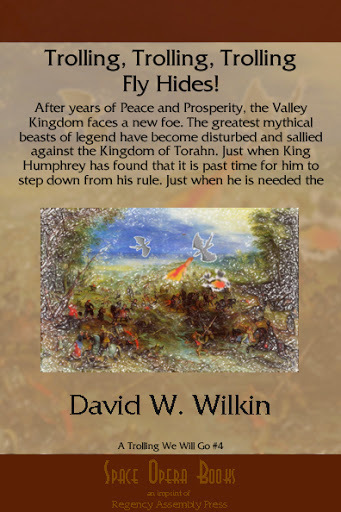
Barnes and Noble for your Nook
Old age is catching up to Humphrey and his friends. He feels it in his bones and with his son and heir having reached the prime of his life, it could very well be time to pass the baton of rule to Daniel.With the Valley Kingdom of Torahn at Peace, that would not be a terrible thing to do. Though breaking his decision to his wife Gwendolyn, the Queen, might be the hardest battle that he ever would fight.
Even as the life of retirement looks to be attractive and possible, however, the Valley Kingdom is beset again. Not Goblins, Trolls, Giants or Men, this time. No. That Humphrey knew would be far too easy.
Those obstacles had been overcome before and the problems they presented had solutions that the army of Torahn was trained to deal with. No, of all the creatures that came forth from Teantellen that they had beaten, the one they had never faced now came forth. Dragons!
Who in the realm knew how to fight these mythical beasts? Was there even away to do so?
Now Humphrey who had thought to spend the remainder of his days quietly writing his memoirs and drinking, was faced with the greatest challenge he had ever known.
Feedback
If you have any commentary, thoughts, ideas about the book (especially if you buy it, read it and like it ;-) then we would love to hear from you.


November 13, 2014
Regency Personalities Series-Miles Atkinson
Regency Personalities Series
In my attempts to provide us with the details of the Regency, today I continue with one of the many period notables.
Miles Atkinson
1741–1811
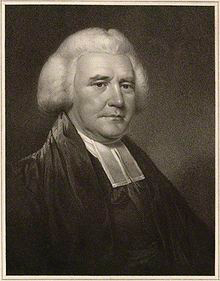
Miles Atkinson
Miles Atkinson was the second son of the Rev. Christopher Atkinson, rector of Thorp Arch, Yorkshire. He was born at Ledsham 28 September 1741, and educated at Peterhouse, Cambridge (B.A. 1763). He became curate of the parish church of Leeds; head-master of the school of Drighlington, near Leeds (1764–70); lecturer of the parish church of Leeds, 1769; vicar of Kippax, near Leeds, 1783 and minister of St. Paul’s Church, Leeds, 1793, which he founded at a cost of nearly £10,000.
Atkinson died 6 February 1811.
Atkinson published several pulpit discourses, and a collection of his Practical Sermons was published at London in two volumes, 1812.


An Unofficial Guide to how to win the Scenarios of Wild the 2nd Expansion for Rollercoaster Tycoon 3
An Unofficial Guide to how to win the Scenarios of Wild
I have been a fan of this series of computer games since early in its release of the very first game. That game was done by one programmer, Chris Sawyer, and it was the first I recall of an internet hit. Websites were put up in dedication to this game where people showed off their creations, based on real amusement parks. These sites were funded by individuals, an expense that was not necessarily as cheap then as it is now. Nor as easy to program then as it might be to build a web page now.
Prima Books released game guides for each iteration of the game, Rollercoaster Tycoon 1, Rollercoaster Tycoon 2 and Rollercoaster Tycoon 3 (RCT3) but not for the expansion sets. And unlike the first two works, the third guide was riddle with incorrect solutions. As I played the game that frustrated me. And I took to the forums that Atari, the game publisher hosted to see if I could find a way to solve those scenarios that the Prima Guide had written up in error. Not finding any good advice, I created my own for the scenarios that the “Official” Guide had gotten wrong.
Solutions that if you followed my advice you would win the scenario and move on. But if you followed the “Official” version you would fail and not be able to complete the game. My style and format being different than the folks at Prima, I continued for all the Scenarios that they had gotten right as well, though my solutions cut to the chase and got you to the winner’s circle more quickly, more directly.
My contributions to the “Official” Forum, got me a place as a playtester for both expansions to the game, Soaked and Wild. And for each of these games, I wrote the guides during the play testing phase so all the play testers could solve the scenarios, and then once again after the official release to make changes in the formula in case our aiding to perfect the game had changed matters. For this, Atari and Frontier (the actual programmers of the game) placed me within the game itself.
And for the longest time, these have been free at the “Official” Forums, as well as my own website dedicated to the game. But a short time ago, I noticed that Atari, after one of its bankruptcies had deleted their forums. So now I am releasing the Guide for one and all. I have added new material and it is near 100 pages, just for the first of the three games. It is available for the Kindle at present for $2.99.
(Click on the picture to purchase)
Not only are all 12 Scenarios covered, but there are sections covering every Cheat Code, Custom Scenery, the famous Small Park Competition, the Advanced Fireworks Editor, the Flying Camera Route Editor which are all the techniques every amusement park designer needs to make a fantastic park in Rollercoaster Tycoon 3.


November 12, 2014
Regency Personalities Series-Admiral Sir Alexander Cochrane
Regency Personalities Series
In my attempts to provide us with the details of the Regency, today I continue with one of the many period notables.
Admiral Sir Inglis Alexander Cochrane
23 April 1758 – 26 January 1832
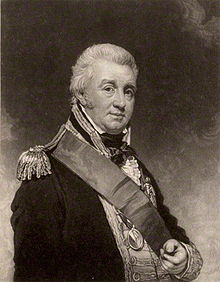
Alexander Cochrane
Admiral Sir Alexander Cochrane was born a younger son of the Scottish peer Thomas Cochrane, the eighth Earl of Dundonald, and his wife. He joined the Royal Navy as a boy and served with British naval forces in North America. He served during the American War of Independence.
Cochrane also participated in the Egyptian operations in 1801. When Alexandria fell, Cochrane, in the 74-gun third-rate HMS Ajax, with the sixth-rate HMS Bonne Citoyenne, the HMS Cynthia, the brig-sloops HMS Port Mahon and HMS Victorieuse, and three Turkish corvettes, were the first vessels to enter the harbour.
In 1805 he was made commander of the Leeward Islands station. He conducted operations against the French and Spanish on 6 February 1806 at the Battle of San Domingo during the Napoleonic Wars. A cannonball blew his hat off his head while he was on the deck of his flagship, HMS Northumberland. He was knighted and appointed KCB on 29 March 1806 in recognition of his service. Other rewards included thanks from both Houses of Parliament, freedom of the city of London, and a sword valued at 100 guineas.
Following the concern in Britain that neutral Denmark was entering an alliance with Napoleon, with the rank of Rear-Admiral, he sailed in HMS Belleisle (74 guns) as commander of the squadron of ships that was sent to occupy the Danish West Indies. In 1809 he commanded naval forces in the conquest of Martinique.
From April 1814, during the War of 1812 against the United States, Cochrane, then a Vice Admiral, served as Commander-in-Chief of the North American Station, based at the new dockyard in Bermuda. He landed the force under General Ross that burned Washington and pushed successful naval forays at the same time. Initially he wanted to attack Rhode Island in New England after the success at Washington, but was dissuaded by Ross and Admiral Cockburn, who wanted to go after the bigger prize of Baltimore, Maryland.
During the Battle of Baltimore, Cochrane directed the bombardment of Fort McHenry in Baltimore, which proved ineffectual. He resisted calls to attack the fort more aggressively with frigates. He ordered a diversionary raid by boats to assist the army encamped near Baltimore in their proposed attack on Hampstead hill (which they cancelled and withdrew), but this diversion had no success. In Baltimore, the British used bomb vessels and rocket ship, which inspired Francis Scott Key’s poem that became “The Star-Spangled Banner,” the US national anthem.
Cochrane led the British force that won the Battle of Lake Borgne in December 1814 in Louisiana. His forces built a hard short road to New Orleans for use by British armed forces. But, the British army was defeated at the Battle of New Orleans in January 1815. As news that Britain had ratified the peace treaty (the Treaty of Ghent) had not reached the battlefield, the Battle of New Orleans was fought after the war was ended. The peace treaty was being carried to Washington for ratification by the United States Congress.
The Duke of Wellington held that the failure of the New Orleans campaign was largely the fault of Cochrane. In a eulogy to General Edward Pakenham — Wellington’s brother-in-law, killed at New Orleans, he said:
I cannot but regret that he was ever employed on such a service or with such a colleague. The expedition to New Orleans originated with that colleague…. The Americans were prepared with an army in a fortified position which still would have been carried, if the duties of others, that is of the Admiral (Sir Alexander Cochrane), had been as well performed as that of he whom we now lament.
Despite the lack of success at New Orleans, the British nonetheless went on to force the surrender of Mobile, Alabama and capture the United States Navy Flagship, the U.S.S. President and it’s commodore, Stephen Decatur outside New York Harbor. Cochrane was thus promoted to admiral in 1819. From 1821 to 1824, he was Commander-in-Chief, Plymouth. He died in Paris on 26 January 1832.
Cohrane was from Member of Parliament (MP) for Stirling Burghs from 1800 to 1802, and from 1803 to 1806.
In 1788 he married Maria Shaw; they had three sons and two daughters. His son Thomas John Cochrane was entered in the Royal Navy at the age of seven; he rose to become colonial governor of the colony of Newfoundland, and Admiral of the Fleet; he also received a knighthood in the Order of the Bath.
Alexander Cochrane was the sixth of the surviving sons of Thomas Cochrane, 8th Earl of Dundonald. The eldest son Archibald Cochrane became the earl and lost the family lands on a series of inventions and investments. Many of the younger sons served in the military or had careers supplying it. The next brother, Charles, served in the army and was killed at the Siege of Yorktown; he had married to Catherine, the daughter of Major John Pitcairn. The third surviving son, John Cochrane, was a paymaster and provisioner to the army and navy. His children included Nathaniel Day Cochrane, who became a rear admiral, and probably of the chess player John Cochrane. The next son, Basil Cochrane, made a fortune supplying the Royal Navy in India. Alexander was the sixth son. The seventh, George Augustus Frederick Cochrane, had an army career and served in Parliament. The youngest son, Andrew Cochrane-Johnstone, was an army officer, colonial governor, politician, and fraudster.
The Earl of St. Vincent wrote of the Cochrane brothers in 1806, “The Cochranes are not to be trusted out of sight, they are all mad, romantic, money-getting and not truth-telling—and there is not a single exception in any part of the family.”


Fantasy from Space Opera Books, Trolling’s Pass and Present
Trolling’s Pass and Present
Not only do I write Regency and Romance, but I also have delved into Fantasy. The Trolling series, (the first three are in print) is the story of a man, Humphrey.
We meet him as he has left youth and become a man with a man’s responsibilities. We follow him in a series of stories that encompass the stages of life.
We see him when he starts his family, when he has older sons and the father son dynamic is tested. We see him when his children begin to marry and have children, and at the end of his life when those he has loved, and those who were his friends proceed him over the threshold into death.
All this while he serves a kingdom troubled by monsters. Troubles that he and his friends will learn to deal with and rectify.
It is now available in a variety of formats. For $2.99 you can get this fantasy adventure.
Barnes and Noble for your Nook
Years since their battles with the Trolls, even on foreign soil, the warriors of the Valley Kingdom of Torahn need something to keep their edge honed.
The economy too is beginning to fray a little without the great wars to support. The Leaders hit upon the idea of searching for a path to reach the east side of the continent.
The Elves swear that at one time their writings tell of such, the Dwarves swear such a pass across Teantellen is legendary. Teantellen though is filled with races man has never gotten along with well. Goblins, Dark Elves, Trolls, Giants and Dragons.
It has been years since the mountain tops exploded, and perhaps that has changed things enough that a way can be found to link the western lands with the eastern lands and increase trade, and prosperity for all. Even should they fail in their quest, as the history of man has shown to this point in time, the attempt will do much to spur the economy.
Tens of thousands of gold will be spent by the Council of Twenty-One to pay for such an expedition. Gold that those who are not so scrupulous might choose to pocket as they tried in the Troll Wars.
With such shenanigans taking place again, are the hopes of the previous generation, the leaders from the Troll Wars now in retirement, ready to be achieved? Is it time for Torahn, called the Valley Kingdom, but the only Kingdom without a King, to have a King once more?
Feedback
If you have any commentary, thoughts, ideas about the book (especially if you buy it, read it and like it ;-) then we would love to hear from you.


November 11, 2014
Regency Personalities Series-Sir William Lawrence 1st Baronet
Regency Personalities Series
In my attempts to provide us with the details of the Regency, today I continue with one of the many period notables.
Sir William Lawrence 1st Baronet
16 July 1783 – London, 5 July 1867
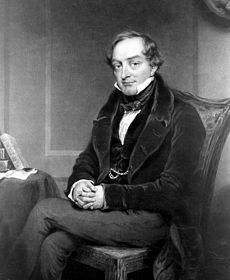
William Lawrence
Lawrence was born in Cirencester, Gloucestershire, the son of the town’s chief surgeon and physician. His father’s side of the family were descended from the Fettiplace family. His younger brother was one of the founding members of the Royal Agricultural College at Cirencester. At 15 he was apprenticed to, and lived with, John Abernethy (FRS 1796) for 5 years. He married Louisa Senior (1803–1855), the daughter of a Mayfair haberdasher, who built up social fame through horticulture. Their son, Sir Trevor Lawrence, was for many years President of the Royal Horticultural Society.
Lawrence had a long and successful career as a surgeon. He reached the top of his profession, and just before his death the Queen rewarded him with a baronetcy (see Lawrence baronets). He had for many years declined such honours, and family tradition was that he finally accepted to help his son’s courtship of an aristocratic young woman (which did not succeed). Lawrence suffered an attack of apoplexy whilst descending the stairs at the College of Surgeons and died on 5 July 1867 at his house, 18 Whitehall Place, London.
Said to be a brilliant scholar, Lawrence was the translator of several anatomical works written in Latin, and was fully conversant with the latest research on the continent. He had good looks and a charming manner, and was a fine lecturer. His quality as a surgeon was never questioned. Lawrence helped the radical campaigner Thomas Wakley found the Lancet journal, and was prominent at mass meetings for medical reform in 1826. Elected to the Council of the RCS in 1828, he became its President in 1846, and again in 1855.
During Lawrence’s surgical career he held the posts of Professor of Anatomy and Surgery, Royal College of Surgeons (1815–1922); Surgeon to the hospitals of Bridewell and Bethlem, and to the London Infirmary for Diseases of the Eye; Demonstrator of Anatomy, then Assistant Surgeon, later Surgeon, St Bartholomew’s Hospital (1824–1865). Later in his career, he was appointed Surgeon Extraordinary, later Serjeant Surgeon, to the Queen. His specialty was ophthalmology, although he practised in and lectured and wrote on all branches of surgery. Pugin and Queen Victoria were among his patients with eye problems.
Shelley and his second wife Mary Shelley consulted him on a variety of ailments from 1814. Mary’s novel Frankenstein might have been inspired by the vitalist controversy between Lawrence and Abernethy, and “Lawrence could have guided the couple’s reading in the physical sciences”.
Despite reaching the height of his profession, with the outstanding quality of his surgical work, and his excellent textbooks, Lawrence is mostly remembered today for an extraordinary period in his early career which brought him fame and notoriety, and led him to the brink of ruin.
At the age of 30, in 1813, Lawrence was elected a Fellow of the Royal Society. In 1815 he was appointed Professor of Anatomy and Surgery by the College of Surgeons. His lectures started in 1816, and the set was published the same year. The book was immediately attacked by Abernethy and others for materialism, and for undermining the moral welfare of the people. One of the issues between Lawrence and his critics concerned the origin of thoughts and consciousness. For Lawrence, as for ourselves, mental processes were a function of the brain. Abernethy and others thought differently: they explained thoughts as the product of vital acts of an immaterial kind. Abernethy also published his lectures, which contained his support for John Hunter’s vitalism, and his objections to Lawrence’s materialism.
In subsequent years Lawrence vigorously contradicted his critics until, in 1819, he published a second book, known by its short title of the Natural history of man. The book caused a storm of disapproval from conservative and clerical quarters for its supposed atheism, and within the medical profession because he advocated a materialist rather than vitalist approach to human life. He was linked by his critics with such other ‘revolutionaries’ as Thomas Paine and Lord Byron. It was “the first great scientific issue that widely seized the public imagination in Britain, a premonition of the debate over Darwin’s theory of evolution by natural selection, exactly forty years later”.
Hostility from the established Church of England was guaranteed. “A vicious review in the Tory Quarterly Review execrated his materialist explanation of man and mind”; the Lord Chancellor, in the Court of Chancery (1822), ruled his lectures blasphemous, on the grounds that the book contradicted Holy Scripture (the Bible). This destroyed the book’s copyright. Lawrence was also repudiated by his own teacher, Abernethy, with whom he had already had a controversy about John Hunter’s teachings. There were supporters, such as Richard Carlile and Thomas Forster, and “The Monthly Magazine”, in which Lawrence was compared to Galileo. However, faced with persecution, perhaps prosecution, and certainly ruin through the loss of surgical patients, Lawrence withdrew the book. The time had not yet arrived when a science which dealt with man as a species could be conducted without interference from the religious authorities.
It is interesting that the Court of Chancery was acting, here, in its most ancient role, that of a court of conscience. This entailed the moral law applied to prevent peril to the soul of the wrongdoer through mortal sin. The remedy was given to the plaintiff (the Crown, in this case) to look after the wrongdoer’s soul; the benefit to the plaintiff was only incidental. This is also the explanation for specific performance, which compels the sinner to put matters right. The whole conception is mediæval in origin.
It is difficult to find a present-day parallel. The withholding of copyright, though only an indirect financial penalty, was both an official act and a hostile signal. We do not seem to have a word for this kind of indirect pressure, though Suppression of dissent comes closer than censorship. Perhaps the modern ‘naming and shaming’ comes closest. The importance of respectability, reputation and public standing were critical in this case, as so often in traditional societies.
After repudiating his book, Lawrence returned to respectability, but not without regrets. He wrote in 1830 to William Hone, who was acquitted of libel in 1817, explaining his expediency and commending Hone’s “much greater courage in these matters”.
He continued to espouse radical ideas and, led by the famous radical campaigner Thomas Wakley, Lawrence was part of the small group which launched The Lancet, and wrote material for it. Lawrence wrote pungent editorials, and chaired the public meetings in 1826 at the Freemasons’ Tavern. He was also co-owner of the Aldersgate Private Medical Academy, with Frederick Tyrrell.
Meetings for members of the College, were attended by about 1200 people. The meetings were called to protest against the way surgeons abused their privileges to set student fees and control appointments.
In his opening speech Lawrence criticised the by-laws of the College of Surgeons for preventing all but a few teachers in London, Dublin, Edinburgh, Glasgow and Aberdeen from issuing certificates of attendance at preparatory lectures. He pointed out that Aberdeen and Glasgow had no cadavers for dissection, without which anatomy could not be properly taught.
A proposed change in the regulations of the College of Surgeons would soon cut the ground from under the private summer schools, since diplomas taken in the summer were not to be recognised.
“It would appear from the new regulations that sound knowledge was the sort acquired in the winter, when the hospital lecturers delivered their courses, while unsound knowledge was imparted in the summer when only the private schools could provide the instruction”. Lawrence in his opening speech, Freemason’s Tavern, 1826.
Lawrence concluded by protesting against the exclusion of the great provincial teachers from giving recognised certificates.
However, gradually Lawrence conformed more to the style of the College of Surgeons, and was elected to their Council in 1828. This somewhat wounded Wakley, who complained to Lawrence, and made some remarks in the Lancet. But, true to form, Wakley soon saw Lawrence’s rise in the College as providing him with an inside track into the working of the institution he was hoping to reform. For some years Lawrence hunted with the Lancet and ran with the College. From the inside, Lawrence was able to help forward several of the much-needed reforms espoused by Wakley. The College of Surgeons was at last reformed, to some extent at least, by a new charter in 1843.
This episode marks Lawrence’s return to respectability; in fact, Lawrence succeeded Abernethy as the ‘dictator’ of Bart’s.
His need for respectability and worldly success might have been influenced by his marriage in 1828, at the age of 45, to the 25-year-old socially ambitious Louisa Senior.
At any rate, from then on Lawrence’s career went ever forward. He never looked back: he became President of the Royal College of Surgeons, and Serjeant-Surgeon to Queen Victoria. Before he died she made him a baronet. “Never again [did] he venture to express his views on the processes of evolution, on the past or the future of man.” He did, however, warn the young T.H. Huxley – in vain, it must be said – not to broach the dangerous topic of the evolution of man.
In 1844 Carl Gustav Carus, the physiologist and painter, made “a visit to Mr Lawrence, author of a work on the “Physiology of Man” which had interested me much some years ago, but which had rendered the author obnoxious to the clergy… He appears to have allowed himself to be frightened by this, and is now merely a practising surgeon, who keeps his Sunday in the old English fashion, and has let physiology and psychology alone for the present. I found him a rather dry, but honest man”. Looking back in 1860 on his controversies with Abernethy, Lawrence wrote of “events which though important at the time of occurrence have long ceased to occupy my thoughts”.
In 1828, he was elected a foreign member of the Royal Swedish Academy of Sciences.
The careful anonymity in which the Vestiges of the Natural History of Creation was published in 1844, and the very great caution shown by Darwin in publishing his own evolutionary ideas, can be seen in the context of the need to avoid a direct conflict with the religious establishment. In 1838 Darwin referred in his “C” transmutation notebook to a copy of Lawrence’s “Lectures on physiology, zoology, and the natural history of man”, and historians have speculated that he brooded about the implied consequences of publishing his own ideas.
In Lawrence’s day the impact of laws on sedition and blasphemy were even more threatening than they were in Darwin’s time. Darwin referred to Lawrence (1819) six times in his Descent of man (1871).
Lawrence’s Natural history of man contained some remarkable anticipations of later thought, but was ruthlessly suppressed. To this day, many historical accounts of evolutionary ideas do not mention Lawrence’s contribution. He is omitted, for example, from many of the Darwin biographies, from some evolution textbooks, essay collections, and even from accounts of pre-Darwinian science and religion.
Although the only idea of interest which Darwin found in Lawrence was that of sexual selection in man, the influence on Alfred Russel Wallace, was more positive. Wallace “found in Lawrence a possible mechanism of organic change, that of spontaneous variation leading to the formation of new species”.


RAP has The Shattered Mirror, A Regency Romance
The Shattered Mirror
For your enjoyment, one of the Regency Romances I published. It is available for sale and now at a reduced price, and I hope that you will take the opportunity to order your copy.
Order for yourself or as a gift. It is now available in a variety of formats. For just a few dollars this Regency Romance can be yours for your eReaders or physically in Trade Paperback.
Barnes and Noble for your Nook
and in Trade Paperback
Bridget Halifax-Stokes was giddy with the excitement of her season in London. Town had beckoned and her season came on the heels of the end of the war against the tyrant.
All the handsome men were returning heroes. What better year to come out.
Her father thought it all nonsense. Her mother believed that it would be the best showing of any of her daughters.
More lords available and luck that Bridget was just the perfect age.
All is fun and frivolity until Bridget literally crashes into Sir Patrick Hampton as he limps along the high street. A man she knew once well, now a stranger with dark and foreboding eyes.
Feedback
If you have any commentary, thoughts, ideas about the book (especially if you buy it, read it and like it ;-) then we would love to hear from you.


November 10, 2014
Regency Personalities Series-Elizabeth Rebecca Edwin
Regency Personalities Series
In my attempts to provide us with the details of the Regency, today I continue with one of the many period notables.
Elizabeth Rebecca Edwin
1771-1854
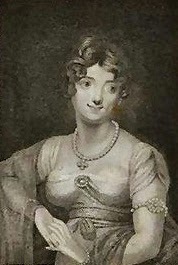
Elizabeth Rebecca Edwin
Elizabeth Rebecca Edwin was the daughter of actor William Talbot Richards (d. 1813), who at the time of her birth in Dublin had been engaged with her mother at the Crow Street Theatre. Her mother’s name and fate is unknown here, for when Edwin was around eight her father married in London, twenty-one-year-old Sarah Edmonds.
At Crow Street Theatre, when eight years old, she appeared in Prince Arthur and other juvenile characters, including a part written specially for her by O’Keefe in his lost and forgotten farce, The Female Club. She also, for her benefit, played Priscilla Tomboy in The Romp, an abridged version of Bickerstaffe’s Love in the City. She left the stage for a time to be educated. After playing in the country she appeared at Covent Garden Theatre 13 November 1789, as Miss Richards from Margate, in The Citizen of Murphy.
The following year she joined at Hull the company of Tate Wilkinson, playing with great success in comedy. In the line of parts taken by Mrs. Jordan, Wilkinson declares her the ‘very best’ he has seen, surpassing her predecessor in youth and grace. ‘Her face,’ he says, ‘is more than pretty, it is handsome and strong featured, not unlike Bellamy’s; her person is rather short, but take her altogether she is a nice little woman’. She married John Edwin the younger and she joined with her husband the mixed company of actors and amateurs assembled by the Earl of Barrymore at Wargrave. She appeared with her husband at the Haymarket Theatre, 20 June 1792, as Lucy in ‘An Old Man taught Wisdom.’ Subsequently she passed to the private theatre in Fishamble Street, Dublin, opened by Lord Westmeath and Frederick Jones.
In October 1794 she had rejoined Tate Wilkinson, appearing in Doncaster with her husband. With him she visited Cheltenham, and 14 October 1797, still in his company, made, as Mrs. Edwin from Dublin, her first appearance in Bath, playing Amanthis and Roxalana. Here, in Bristol, or in Southampton, where she became a special favourite, she took the leading characters in comedy and farce. In 1805, while in Dublin, she lost her husband to suicide. At the recommendation of T. Sheridan she was engaged for Drury Lane. Before she reached the theatre, however, it was burnt down, and on 14 October 1809, as Widow Cheerly in The Soldier’s Daughter, she appeared with the Drury Lane company at the Lyceum. The chief characters in comedy were at once assigned her, and 3 February 1810 she was the original Lady Traffic in Riches, or the Wife and Brother, extracted by Sir James Bland Burgess from Massinger’s City Madam.
At Drury Lane she remained for some years. She was selected to recite, 3 July 1815, the verses of the manager Arnold in commemoration of Waterloo. She then returned to Dublin, to Crow Street Theatre, and, engaged by Robert William Elliston, appeared, 16 November 1818, at the Olympic Theatre, speaking an opening address by Moncrieff. The following year she accompanied her manager to Drury Lane. Mrs. Edwin was also seen at the Haymarket, Adelphi, Surrey, and other West End theatres, and played at Scarborough, Weymouth, Cheltenham, etc. At a comparatively early age she retired from the stage with a competency. This was greatly diminished by the dishonesty of a stockbroker, whom she entrusted with money for the purchase of an annuity, and who absconded to America with between eight and nine thousand pounds. This compelled her to return again to the boards.
On 13 March 1821 she played at Drury Lane the Duenna in Sheridan’s comic opera, this being announced as her first appearance in a character of that description. With rare candour she owned herself too old for the part in which she was accustomed to appear. She appeared at Drury Lane the following season. For very many years she lived in retirement, and, all out forgotten, died at her lodgings in Chelsea 3 August 1854. She had the reputation of delivering an address or epilogue with especial grace and fervour.
She was below the middle height, fair, and with expressive features. Careful in money matters, she barely escaped the charge of parsimoniousness. Portraits of her by Samuel De Wilde as Eliza in Riches and Albina Mandeville in The Will are in the Mathews collection at the Garrick Club.




